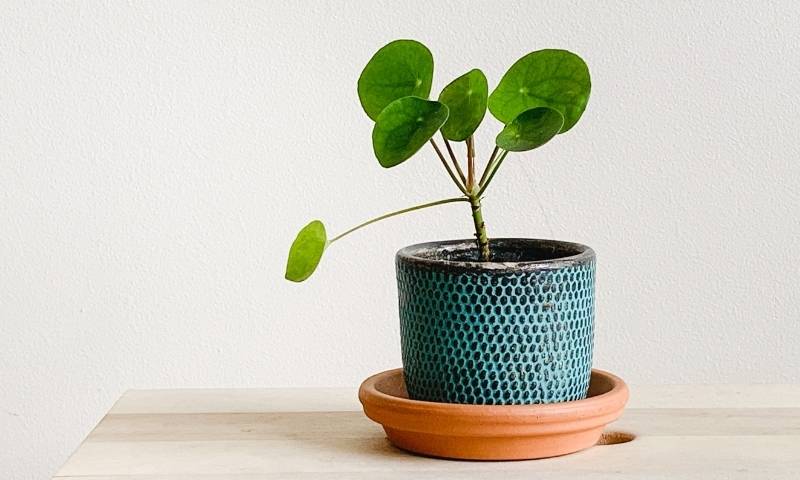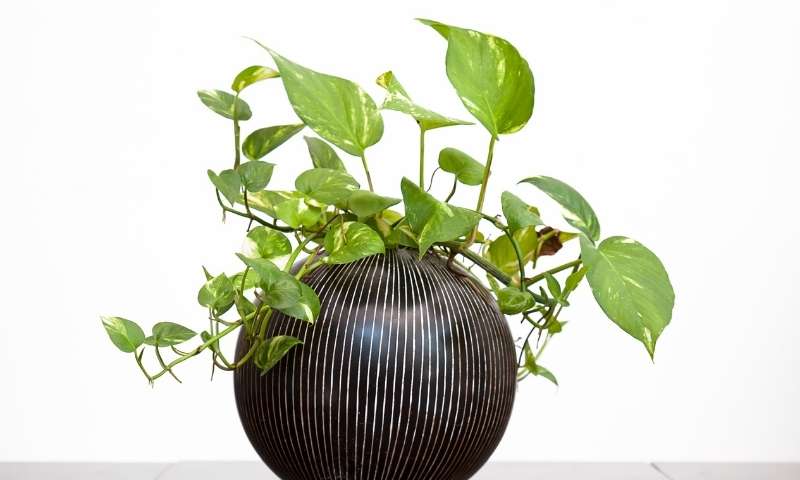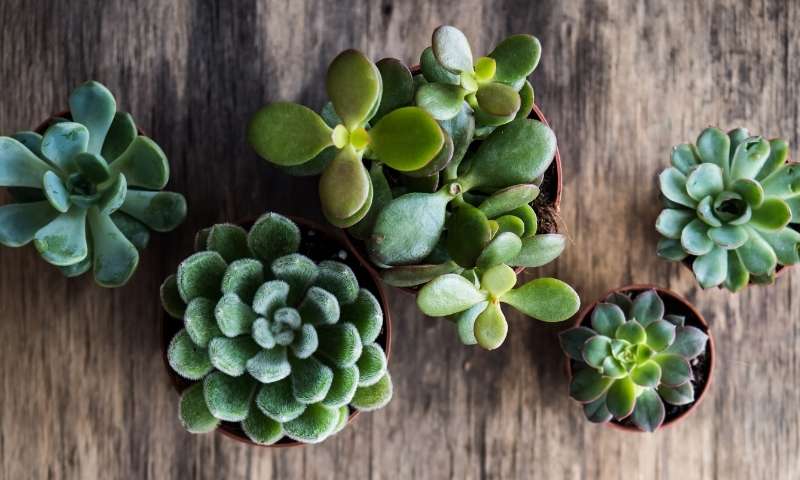Being a beginner houseplant parent can be a little daunting. You’ve got a living thing to look after and a million people telling you the best way to look after it.
It’s a little bit like when I was learning to swim. I didn’t take the easy route with floats and learning the technique. I went straight in and set off for a length of the pool.
Halfway down the pool, I started to sink. I was still moving forwards but the water line had moved above my head and overwhelmed me. So I stood up in the 2-foot deep water. I didn’t say it was a dramatic story.
I don’t know why I didn’t learn properly, I was 7 at the time. I can swim nowadays, but I’ve never learned properly and I couldn’t take on a difficult swim. I just wish I’d started in the right way.
With houseplants, there are certain ones that are best to start with to help you along the journey towards becoming a confident houseplant parent.
They’ll ease you in gently and get you used to the common things you need to do with most houseplants. And they’re gorgeous too!
These are the best houseplants for beginners due to being low-maintenance and hardy.
The Best Houseplants For Beginners
Most lists of ‘best houseplants for beginners’ will just give you the easiest plants. I’m going to show you easy-to-look-after plants, but they’ll also be some of my favourite plants in general.
What’s the point in having an easy houseplant if you don’t even like it?
There’s no particular order to these plants, but if I were starting all over again, I would go for the Pilea Peperomioides.
Let’s find out why..
Pilea Peperomioides (Chinese Money Plant)

The Pilea Peperomioides is a beautiful plant. It has gorgeous circular leaves spraying out from a central trunk.
The greatest thing about a Pilea Peperomioides is that it will produce many baby plants over the course of its life. This plant will give you great pleasure from it’s appearance, but will also give you lots of free plants every year!
If you’re starting off and are wondering how you can build your sumptuous indoor jungle quickly, then the Pilea Peperomioides is going to help you out with that.
In addition, it’s a pretty low-maintenance plant. Not as low-maintenance as some others on this list, but it’s not going to cause you a lot of trouble if you follow some basic houseplant care.
Sansevieria (Snake Plant)

Seriously, you could leave this thing for a month and it wouldn’t be affected.
That’s not to say that you should leave it for a month, I’m just making the point that the Snake Plant is a particularly hardy plant.
It originates from dry regions in Western Africa so it is used to long periods of drought. In fact, you should be leaving the soil to dry out between waterings.
Like the Pilea, the Snake Plant will produce babies that you can plant by themselves, although it is quite slow growing.
I love the Snake Plant because of it’s strong, structural leaves the shoot upwards. It’s a stoic houseplant that oozes confidence and stability.
As you can tell, I like to think of houseplants as having some personality!
Epipremnum Aureum (Golden Pothos)

These bad boys are both beautiful and aggressive in the same breath. By aggressive, I mean that they will grow like nobody’s business.
All they need is enough water and a bright spot and they will keep on going until you cut them back.
And when you do, you guessed it, you can make Pothos babies with the cuttings!
I’m not really choosing these plants based on the fact that they will multiply, but it’s starting to look like a trait I admire in houseplants.
I fear I have a desire to start a houseplant nursery! 🤔
I you like the look of a trailing plant like the Pothos, then this is your best bet as a starter plant. The great thing about trailing plants is that you can hang them up in baskets if you are short on surfaces to place any houseplants.
The leaves on the Golden Pothos vary greatly in appearance depending on the conditions they are kept in so you never know exactly what you will get. An added bonus of exciting anticipation! 😂
Chlorophytum (Spider Plant)

I think the Spider Plant gets a bit of a bad rap as being the ‘boring’ houseplant. It was collected to death back in the 70s and 80s because it’s such an easy plant to keep, but it’s making a bit of a comeback as desirable plant now.
These things can happen in cycles!
The Spider Plant is… well, there’s no getting around this: it’s the rabbit of the houseplant world. It will produce babies prolifically.
Yep, I have a problem. My name’s James and I’m addicted to houseplants that multiply!
But the Spider Plant takes it to a whole new level. It will grow offshoots away from the main plant in search of somewhere for them to root. All you need to do is cut them off and pot them, or place them in a jar of water.
In addition, they are not particularly picky about light, temperature or how often you water them. Just don’t leave them in direct sun for more than a few hours and stick to my basic houseplant care guidelines.
If the common Spider Plant is too plain for you, check out the slightly crazier-looking Curly Spider Plant.
Succulents and Cacti

I know, I know, it’s a huge category of houseplants. But they have to be on this list because, like the Snake Plant, they could be left for weeks on end without any maintenance.
But…
Succulents are generally outdoor plants, so you have to choose the right ones if you want to keep them indoors. Brightly coloured succulents (reds, purples, oranges) need a lot of sunlight and will not do well indoors. Go for succulents that are naturally green.
In particular, Haworthia and Gasteria are good varieties for indoors.
After that, they just need a lot of bright indirect light and a good soak of water now and then. They like to dry out completely before being watered, much like the Snake plant.
Cacti, on the other hand, are far happier indoors where it is dry and warm. They are your best bet if you need an extreme low-maintenance plant. They just need as much light as you can give them, so don’t think of putting it anywhere but a windowsill.
Oh, I forgot to say, succulents are fun to propagate from their leaves, but it can be a bit tricky. I just needed to make sure you knew I was still looking out for those plant-multiplying opportunities! 😉
Monstera Deliciosa (Swiss Cheese Plant)

Well, this is a popular plant right now. Luckily, it’s also pretty easy to look after!
I love my Monstera and it currently sits in our bathroom, next to the bath. Sadly, it doesn’t get enough light to thrive there so I’m working out where I can put it so that it fulfils it’s potential.
Under the right conditions, the Monstera Deliciosa produces huge, fan-like leaves that are among the most beautiful leaves in the houseplant world. In my humble opinion.
The Monstera does like a lot of bright light, but not much direct light. It’s not going to complain too much if you forget to water it, so it’ll give you some leeway as you learn the ropes. It’ll even give you a warning that it really does need watering by drooping a little.
These plants grow moderately quickly, so getting a relatively small one (around 40-50cm or 1-2 feet) is a good way to start. The larger ones can get quite expensive!
Propagation from a Monstera (because I feel like I just have to mention it now) is fairly simple, but you need to follow a few rules to get it right.
So, now you know how to multiply your houseplants!
I mean, now you know what the best houseplants for beginners are. I think I lost the plot along the way with the obsession with baby plants, but the main message was still strong, right?
If you are just starting off, as I said, I would recommend getting yourself a Pilea Peperomioides and learning how to care for that first.
One plant at a time, one learning curve at a time. Before you know it, you will have collected an indoor jungle to be proud of and will be a confident houseplant parent.
Like with swimming, learn the basics before you try and swim a length. That way, you won’t start sinking halfway down the pool!
Before long, you’ll probably be handing out houseplant advice left, right and centre. It happens.
